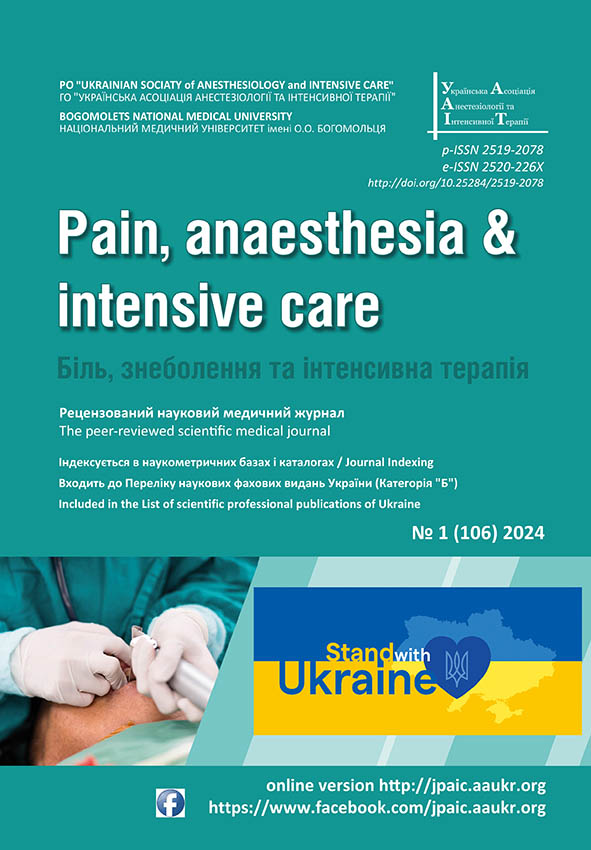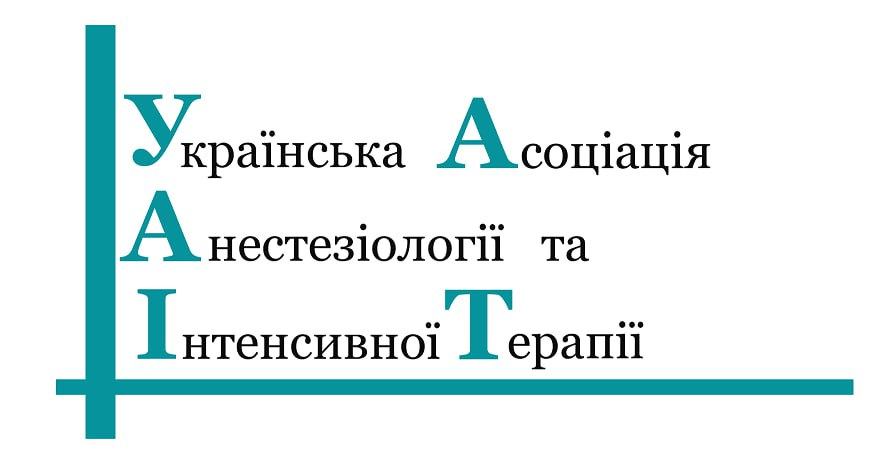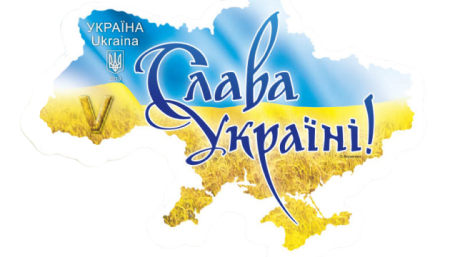ТРАНСФУЗІЙНА ТА ІНФУЗІЙНА ТЕРАПІЯ ПРИ МАСИВНІЙ КРОВОВТРАТІ. ЧАСТИНА 3. ФІЗІОЛОГІЧНІ ПЕРЕДУМОВИ ТА ОБМЕЖЕННЯ ПРИ ВИКОРИСТАННІ ПЛАЗМИ ТА КРІОПРЕЦИПІТАТУ ДЛЯ ГЕМОСТАТИЧНОЇ РЕСУСЦИТАЦІЇ
DOI:
https://doi.org/10.25284/2519-2078.1(106).2024.300623Ключові слова:
масивна кровотеча, масивна крововтрата, тяжка кровотеча, коагулопатія споживання, гіпокоагуляція, коагулопатія розведення, фібриноген, свіжозаморожена плазма, кріопреципітат, гемостатична ресусцитація, цільна кровАнотація
Проведення гемотрансфузій при масивних кровотечах (МК) повинно здійснюватися за принципами гемостатичної ресусцитації і одночасно відновлювати як транспорт кисню (про що ми детально писали в своїй попередній публікації), так і компенсувати дефіцит факторів згортання та тромбоцитів. Фактори згортання (особливо фібриноген) і тромбоцити пасивно втрачаються з кров’ю, що витікає, а також активно втрачаються під час формування тромбів. Хоча принципи гемостатичної ресусцитації відомі і активно пропагуються вже понад десятиліття, на сьогодні все ще не вирішені логістичні проблеми з доступністю одногрупної свіжозамороженої плазми (СЗП) і, тим більше, тромбоцитів та кріопреципітату на етапі початку ресусцитації. Складність вирішення організаційних та логістичних аспектів не дає змоги повною мірою впровадити принципи гемостатичної ресусцитації в рутинну клінічну практику лікування МК в Україні. Дефіцит компонентів крові на початковому етапі ресусцитації змушує деяких лікарів до переливання кристалоїдних і навіть колоїдних розчинів, що при МК може посилювати коагулопатію за рахунок розведення крові. В цій статті ми наведемо патофізіологічні обґрунтування раннього відновлення факторів коагуляції шляхом проведення збалансованої гемостатичної трансфузійної терапії із застосуванням СЗП та кріопреципітату. При МК часто виникає гостра необхідність швидкої корекції коагулопатії, а коли група крові хворого ще не визначена, або коли одногрупна СЗП все ще не готова для переливання то виникає нагальна потреба в трансфузії СЗП від універсального донора АВ (IV групи). Створення запасів СЗП від універсального донора АВ (IV) доцільне в більшості лікувальних закладів, особливо тих, де при МК чи численному та масовому надходженні хворих вірогідне виникнення дефіциту СЗП інших груп крові.
За відсутності достатньої кількості компонентів та препаратів крові, що містять фактори згортання та тромбоцити, варто розглянути можливість переливання теплої цільної крові (ЦК) чи консервованої ЦК.
Посилання
Adam EH, Fischer D. Plasma Transfusion Practice in Adult Surgical Patients: Systematic Review of the Literature. Transfus Med Hemother. 2020 Oct;47(5):347-359. doi: 10.1159/000511271. Epub 2020 Sep 18. PMID: 33173453; PMCID: PMC7590755.
 |
| 
Rossaint, R., Afshari, A., Bouillon, B. et al. The European guideline on management of major bleeding and coagulopathy following trauma: sixth edition. Crit Care 27, 80 (2023). https://doi.org/10.1186/s13054-023-04327-7.
 |
| 
Пилипенко М.М., Дубров С.О. Трансфузійна та інфузійна терапія при масивній крововтраті. Частина 1. Неочікувана інтраопераційна крововтрата. PAIN, ANAESTHESIA & INTENSIVE CARE, 2023; (3(104), 7–27. https://doi.org/10.25284/2519-2078.3(104).2023.287869
Нехлопочин О.С., Пилипенко М.М., Дубров С.О. Ушкодження магістральних судин при поперековій дискектомії: чинники ризику, діагностика, методи хірургічної корекції, особливості анестезіологічного забезпечення та інтенсивної терапії. Ukr Neurosurg J 2023; 29(3), 3-18. https://doi.org/10.25305/unj.281502
Bonanno, F.G. Hemorrhagic shock: The “physiology approach”. J. Emerg. Trauma Shock 2012, 5, 285–295.
 |
| 
Kietaibl S, Ahmed A, Afshari A, et al. Management of severe peri-operative bleeding: Guidelines from the European Society of Anaesthesiology and Intensive Care: Second update 2022. Eur J Anaesthesiol. 2023 Apr 1;40(4):226-304. doi: 10.1097/EJA.0000000000001803. PMID: 36855941.
 |
|  |
| 
Маркування компонентів донорської крові. Всеукраїнська асоціація донорства крові та трансфузійної допомоги https://transfusiology.com.ua/markuvannya-komponentiv-donorskoyi-krovi/
Пилипенко М.М., Дубров С.О. Трансфузійна та інфузійна терапія при масивній крововтраті. Частина 2. Фізіологічні передумови використання еритроцитів, як компоненту гемостатичної ресусцитації. PAIN, ANAESTHESIA & INTENSIVE CARE, 2023; (4(105), 29-38. https://doi.org/10.25284/2519-2078.4(105).2023.295000.
Serum protein electrophoresis. WikiLectures. https://www.wikilectures.eu/w/Serum_protein_electrophoresis
Palta S, Saroa R, Palta A. Overview of the coagulation system. Indian J Anaesth. 2014 Sep;58(5):515-23. doi: 10.4103/0019-5049.144643. PMID: 25535411; PMCID: PMC4260295.
 |
|  |
| 
Collins PW, Solomon C, Sutor K, et al. Theoretical modelling of fi brinogen supplementation with therapeutic plasma, cryoprecipitate, or fi brinogen concentrate. Br J Anaesth. 2014;113(4):585–95
 |
|  |
| 
Farrugia A. Fresh frozen plasma: Beyond coagulation factor content. Transfus Med. 2022 Apr;32(2):178-179. doi: 10.1111/tme.12850. Epub 2022 Jan 10. PMID: 35014091.
 |
|  |
| 
Bux J, Dickhörner D, Scheel E. Quality of freeze-dried (lyophilized) quarantined singledonor plasma. Transfusion. 2013 Dec; 53(12): 3203–9.
 |
|  |
| 
Garrigue D, Godier A, Glacet A, et al. French lyophilized plasma versus fresh frozen plasma for the initial management of trauma-induced coagulopathy: a randomized open-label trial. J Thromb Haemost. 2018 Mar; 16(3): 481–9.
 |
|  |
| 
Shamsudin S, Yousuf R, Tang YL, et al. Evaluation of coagulation factor activity and sterility of thawed fresh frozen plasma during storage up to 5 days at 4 °C. Malays J Pathol. 2020 Apr; 42(1): 59–64.
 |
|  |
| 
Neisser-Svae A, Trawnicek L, Heger A, et al. Five-day stability of thawed plasma: solvent/detergent-treated plasma comparable with fresh-frozen plasma and plasma frozen within 24 hours. Transfusion. 2016 Feb; 56(2): 404–9.
 |
|  |
| 
von Heymann C, Keller MK, Spies C, et al. Activity of clotting factors in freshfrozen plasma during storage at 4 degrees C over 6 days. Transfusion. 2009 May; 49(5): 913–20.
 |
|  |
| 
Runkel S, Haubelt H, Hitzler W, Hellstern P. The quality of plasma collected by automated apheresis and of recovered plasma from leukodepleted whole blood. Transfusion. 2005 Mar; 45(3): 427–32.
 |
|  |
| 
Khan S, Davenport R, Raza I, et al. Damage control resuscitation using blood component therapy in standard doses has a limited effect on coagulopathy during trauma haemorrhage. Intensive Care Med. 2015;41(2):239–47.
 |
|  |
| 
Innerhofer P, Fries D, Mittermayr M, et al. Reversal of traumainduced coagulopathy using fi rst-line coagulation factor concentrates or fresh frozen plasma (RETIC): a single-centre, parallel-group, openlabel, randomised trial. Lancet Haematol. 2017;4(6):e258–71.
 |
|  |
| 
Fresh Frozen Plasma Transfusion – Guideline for Practice Central index Number: C0329 Year 2019 https://www.pchpathlab.com/cms/sites/default/files/documents/Fresh%20Frozen%20Plasma%20Transfusion%20%20Guideline%20for%20Practice.pdf
Bini R, Virdis F, Cioffi SPB, et al. "Stabilize the Unstable": Treatment Pathophysiology in Bleeding Trauma Patients, from the Field to the ICU. State of the Art. J Pers Med. 2023 Apr 14;13(4):667. doi: 10.3390/jpm13040667. PMID: 37109053; PMCID: PMC10145706.
 |
|  |
| 
Inaba K, Branco BC, Rhee P, et al. Impact of plasma transfusion in trauma patients who do not require massive transfusion. J Am Coll Surg. 2010 Jun;210(6):957-65. doi: 10.1016/j.jamcollsurg.2010.01.031. Epub 2010 Apr 28. PMID: 20510805.
 |
|  |
| 
Oakeshott JE, Griggs JE, Wareham GM, Lyon RM. Kent surrey sussex air ambulance trust: feasibility of prehospital freeze-dried plasma administration in a UK helicopter emergency medical service. Eur J Emerg Med. 2019;26(5):373–8.
 |
|  |
| 
Bickell WH, Wall MJ Jr, Pepe PE, et al. Immediate versus delayed fluid resuscitation for hypotensive patients with penetrating torso injuries. N Engl J Med. 1994;331(17):1105–9.
 |
|  |
| 
Tran A, Yates J, Lau A, et al. Permissive hypotension versus conventional resuscitation strategies in adult trauma patients with haemorrhagic shock: a systematic review and meta-analysis of randomised controlled trials. J Trauma Acute Care Surg. 2018;84(5):802–8.
 |
|  |
| 
Safiejko K, Smereka J, Filipiak KJ, et al. Effectiveness and safety of hypotension fluid resuscitation in traumatic haemorrhagic shock: a systematic review and meta-analysis of randomised controlled trials. Cardiol J. 2020. Preprint. https://www.ncbi.nlm.nih.gov/pubmed/32648249.
 |
|  |
| 
Hylands M, Toma A, Beaudoin N, et al. Early vasopressor use following traumatic injury: a systematic review. BMJ Open. 2017;7(11): e017559.
 |
|  |
| 
Meneses E, Boneva D, McKenney M, Elkbuli A. Massive transfusion protocol in adult trauma population. Am J Emerg Med. 2020;38(12):2661–6.
 |
|  |
| 
Holcomb JB, Tilley BC, Baraniuk S, et al. Transfusion of plasma, platelets, and red blood cells in a 1:1:1 vs a 1:1:2 ratio and mortality in patients with severe trauma: the PROPPR randomised clinical trial. JAMA. 2015;313(5):471–82.
 |
|  |
| 
Nederpelt CJ, El Hechi MW, Kongkaewpaisan N, et al. Fresh frozen plasmato-packed red blood cell ratio and mortality in traumatic haemorrhage: nationwide analysis of 4427 patients. J Am Coll Surg. 2020;230(6):893–901.
 |
|  |
| 
Nardi G, Agostini V, Rondinelli B, et al. Trauma-induced coagulopathy: impact of the early coagulation support protocol on blood product consumption, mortality and costs. Crit Care. 2015;19(1):83.
 |
|  |
| 
Fahrendorff M, Oliveri RS, Johansson PI. The use of viscoelastic haemostatic assays in goal-directing treatment with allogeneic blood products – a systematic review and meta-analysis. Scand J Trauma Resusc Emerg Med. 2017;25(1):39.
 |
|  |
| 
Bugaev N, Como JJ, Golani G, et al. Thromboelastography and rotational thromboelastometry in bleeding patients with coagulopathy: practice management guideline from the Eastern Association for the Surgery of Trauma. J Trauma Acute Care Surg. 2020;89(6):999–1017.
 |
|  |
| 
Santos AS, Oliveira AJF, Barbosa MCL, Nogueira JLDS. Viscoelastic haemostatic assays in the perioperative period of surgical procedures: systematic review and meta-analysis. J Clin Anesth. 2020;64: 109809.
 |
|  |
| 
Wikkelsø A, Wetterslev J, Møller AM, Afshari A. Thromboelastography (TEG) or thromboelastometry (ROTEM) to monitor haemostatic treatment versus usual care in adults or children with bleeding. Cochrane Database Syst Rev. 2016;2016(8):CD007871.
 |
|  |
| 
Chang R, Kerby JD, Kalkwarf KJ, et al. Earlier time to haemostasis is associated with decreased mortality and rate of complications: results from the pragmatic randomised optimal platelet and plasma ratio trial. J Trauma Acute Care Surg. 2019;87(2):342–9.
 |
|  |
| 
Zhang L, Li R, Zhao X, et al. Increased transfusion of fresh frozen plasma is associated with mortality or worse functional outcomes after severe traumatic brain injury: a retrospective study. World Neurosurg. 2017;104:381–9.
 |
|  |
| 
Mohanty A, Kapuria D, Canakis A, et al. Fresh frozen plasma transfusion in acute variceal haemorrhage: results from a multicentre cohort study. Liver Int 2021; 41:1901–1908.
 |
|  |
| 
O’Leary JG, Greenberg CS, Patton HM, et al. AGA clinical practice update: coagulation in cirrhosis. Gastroenterology 2019; 157:34.e1– 43.e1.
 |
|  |
| 
Northup PG, Garcia-Pagan JC, Garcia-Tsao G, et al. Vascular liver disorders, portal vein thrombosis, and procedural bleeding in patients with liver disease: 2020 Practice Guidance by the American Association for the Study of Liver Diseases. Hepatology 2021; 73:366–413.
 |
|  |
| 
Henriquez DDCA, Caram-Deelder C, le Cessie S, et al., TeMpOH-1 Research Group. Association of timing of plasma transfusion with adverse maternal outcomes in women with persistent postpartum hemorrhage. JAMA Netw Open 2019; 2:e1915628.
 |
|  |
| 
Pasquier P, Gayat E, Rackelboom T, et al. An observational study of the fresh frozen plasma: red blood cell ratio in postpartum hemorrhage. Anesth Analg 2013; 116:155–161.
 |
|  |
| 
Mazzeffi MA, Chriss E, Davis K, et al. Optimal plasma transfusion in patients undergoing cardiac operations with massive transfusion. Ann Thorac Surg 2017; 104:153–160.
 |
|  |
| 
Stubbs JR, Zielinski MD, Berns KS, et al. How we provide thawed plasma for trauma patients. Transfusion (Paris). 2015 8;55(8):1830–7.
 |
|  |
| 
Meyer DE, Vincent LE, Fox EE, et al. Every minute counts: Time to delivery of initial massive transfusion cooler and its impact on mortality. J Trauma Acute Care Surg. 2017;83(1):19–24.
 |
|  |
| 
Runkel S., Hitzler W.E. The quality of fresh-frozen plasma in the period after thawing stored at 4 °C and room temperature. 39th Annual Congress of the German Society for Transfusion Medicine and Immunohematology. Transfus Med Hemother 2006;33(suppl 1):36-78.
Zielinski MD, Schrager JJ, Johnson P, et al. Multicenter comparison of emergency release group A versus AB plasma in blunt-injured trauma patients. Clin Transl Sci. 2015 2;8(1):43–7. PubMed: 25200933.
 |
| 
Dunbar NM, Yazer MH, Biomedical Excellence for Safer Transfusion (BEST) Collaborative and the STAT Study Investigators. Safety of the use of group A plasma in trauma: the STAT study. Transfusion (Paris). 2017;57(8):1879–84.
 |
|  |
| 
Inaba K, Branco BC, Rhee P, et al. Impact of ABO-identical vs ABO-compatible nonidentical plasma transfusion in trauma patients. Arch Surg. 2010 Sep;145(9):899-906. doi: 10.1001/archsurg.2010.175. PMID: 20855762.
 |
|  |
| 
de Roulet A, Kerby JD, Weinberg JA, et al. Group A emergencyrelease plasma in trauma patients requiring massive transfusion. J Trauma Acute Care Surg. 2020;89(6):1061–7.
 |
|  |
| 
Noordin SS, Karim FA, Mohammad WMZBW, Hussein AR. Coagulation Factor Activities Changes Over 5 Days in Thawed Fresh Frozen Plasma Stored at Different Initial Storage Temperatures. Indian J Hematol Blood Transfus. 2018 Jul;34(3):510-516. doi: 10.1007/s12288-017-0879-8. Epub 2017 Oct 7. PMID: 30127563; PMCID: PMC6081346.
 |
|  |
| 
Thiele T, Kellner S, Hron G, et al. Storage of thawed plasma for a liquid plasma bank: impact of temperature and methylene blue pathogen inactivation. Transfusion. 2012 Mar;52(3):529-36. doi: 10.1111/j.1537-2995.2011.03317.x
 |
|  |
| 
##submission.downloads##
Опубліковано
Як цитувати
Номер
Розділ
Ліцензія

Ця робота ліцензується відповідно до Creative Commons Attribution-NonCommercial 4.0 International License.
Автори, які публікуються у цьому журналі, погоджуються з наступними умовами:
a. Автори залишають за собою право на авторство своєї роботи та передають журналу право першої публікації цієї роботи на умовах ліцензії Creative Commons Attribution-NonCommercial 4.0 International License, котра дозволяє іншим особам вільно розповсюджувати опубліковану роботу з обов'язковим посиланням на авторів оригінальної роботи та першу публікацію роботи у цьому журналі.
b. Автори мають право укладати самостійні додаткові угоди щодо неексклюзивного розповсюдження роботи у тому вигляді, в якому вона була опублікована цим журналом (наприклад, розміщувати роботу в електронному сховищі установи або публікувати у складі монографії), за умови збереження посилання на першу публікацію роботи у цьому журналі.
c. Політика журналу дозволяє і заохочує розміщення авторами в мережі Інтернет (наприклад, у сховищах установ або на особистих веб-сайтах) рукопису роботи, як до подання цього рукопису до редакції, так і під час його редакційного опрацювання, оскільки це сприяє виникненню продуктивної наукової дискусії та позитивно позначається на оперативності та динаміці цитування опублікованої роботи (див. The Effect of Open Access).








